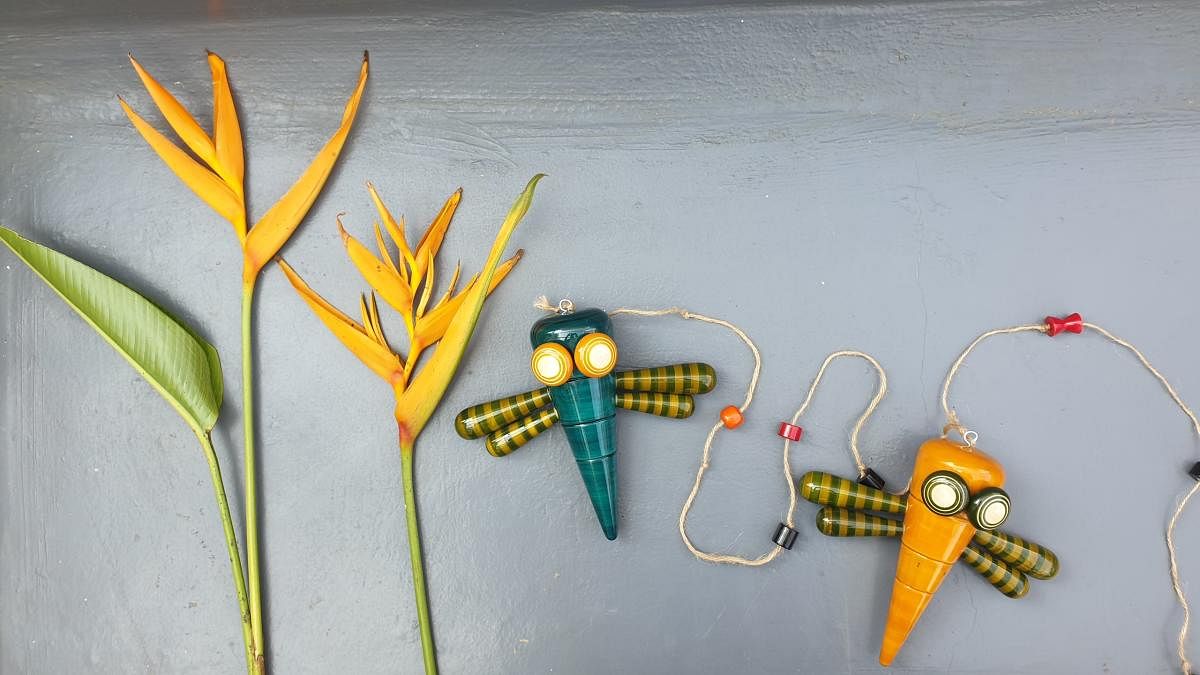
The traditional toy industry has slowed down in a big way because of the pandemic.
Metrolife spoke to a host of businesses specialising in Indian-made artisanal toys, and found them getting by. Sreeranjini GS, founder, Kavade, an enterprise that aims to revive traditional games, says Dasara, usually peak season, was dull this year.
“People give gifts in the Dasara-Deepavali season, but nothing much is happening this time. Even corporate gifting has halted this year,” she says.
The store, located in Seshadripuram, is offering gift vouchers, gift boxes and curated packages, and hopes business will pick up soon.
No respect for craft
Pete Jaison started Vocal for Local Toys, an online marketplace for toys from across the country.
“Despite our rich toy-making history, we only account for 0.5 per cent of the global toy sales. In fact, almost 80 per cent of the toys sold in India are from China,” he says. In July, Varnam Craft Collective had to close down on its Jayanagar store.
Known for its efforts to revive Channapatna crafts, the store was struggling for viability. Karthik Vaidyanathan, owner, says the closure was a direct result of the pandemic, but people here don’t respect the craft as much as people abroad do. Most products are priced at less than Rs 1,000, but customers haggle, he observes.
“There is no consideration for the time, effort or skill that goes into creating an item,” he says.
Govt initiatives
Most artisans are dependent on exports, which have declined in the last few years. The pandemic has led to abrupt cancellations and delays.
“When orders are cancelled, artisans leave and take up other jobs,” he
says.
He is concerned they may never return. With fewer craftspeople, the tradition could die out quickly.
PM’s pep talk
In August, during his ‘Mann Ki Baat’ radio talk, Prime Minister Modi urged people to buy local toys.
Pete says that the talk created some awareness. “It was after this that the Karnataka government announced its proposal to set up the Koppal Industrial Cluster for toys,” he says.
The focus is lacking in India, he observes, unlike in places like Indonesia and Sri Lanka where entire villages find sustenance in a craft.“If you walk into any shop at Channapatna, you will find Kondapalli toys and Sheesham
toys. With no regulatory policies in place, artisans find that there is more profit in reselling than in creating,” Karthik says.
This is compounded by a lack of pride at the government level. “Everyone remembers Channapatna toys during Rajyostava, but what about the rest of the year?” he wonders.
The process of registration and ISI certification should be streamlined, suggests Sreeranjini.
Move online
Varnam has an online store, but relies mostly on walk-ins. “Buying handicrafts is a touch-and-feel experience. The average time a person spends in our stores is about an hour and a half because it is about the experience,” explains Karthik.
Sreeranjini is optimistic about the future of Indian toys, and calls for digital education to help them eliminate middlemen.
Design intervention
Indian toy brands should work hand-in-hand with local toymakers, says Pete. While the designs that traditional toymakers offer may not be appealing to the younger generation, these toys are natural, sustainable and chemical-free, he says.Reviving the crafts is best done through design intervention, in his opinion. “You have to make the design contemporary, functional and modern. Keep the art alive while making it relatable to today’s buyers,” says Karthik.
Tax is high
The GST on handicrafts is 12 per cent. Those in the trade say handmade goods should not be taxed at all, since the cottage industry provides livelihood to artisans and keeps our traditions alive.